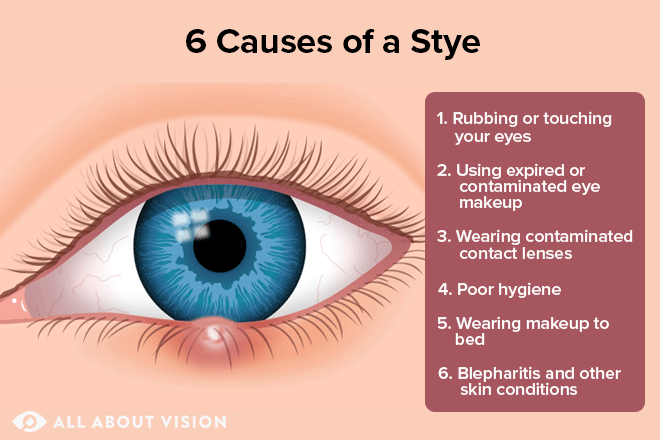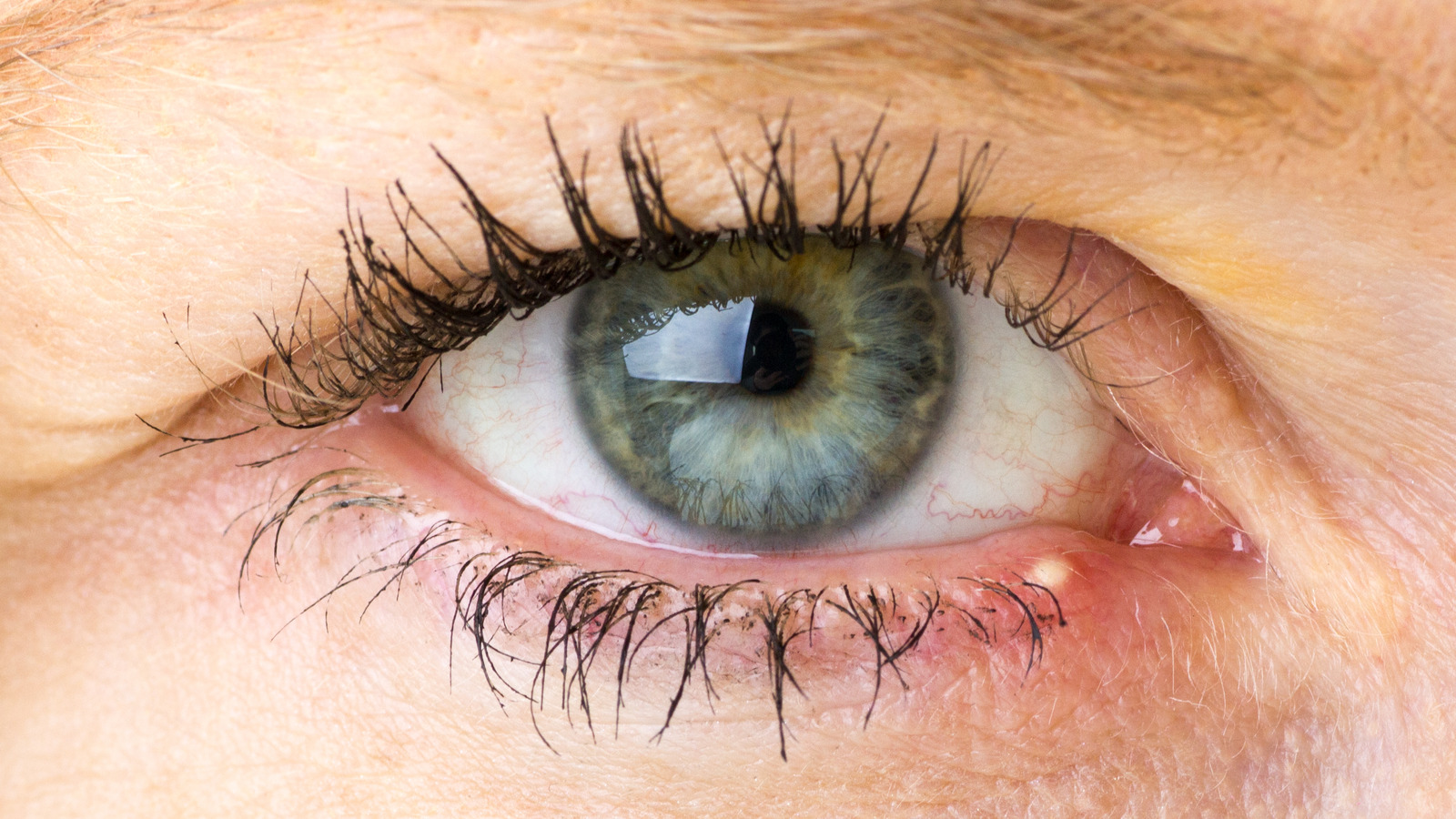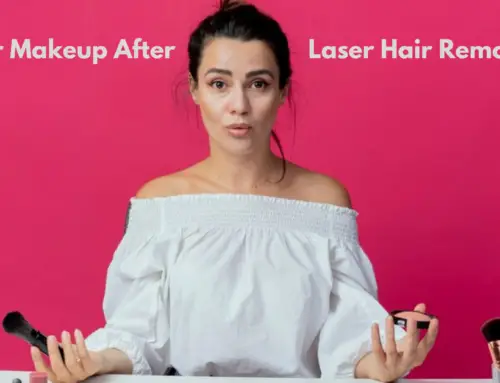When it comes to makeup, we often focus on enhancing our beauty and boosting our confidence. However, did you know that improper use or hygiene of makeup products can lead to the development of styes? A stye is a red, painful lump that forms on the eyelid, typically caused by a bacterial infection. While styes can occur spontaneously, using expired or contaminated makeup can increase the risk of developing these bothersome eye infections.
The connection between makeup and styes lies in the potential for bacteria to thrive and spread on the products we use around our eyes. Expired cosmetics, such as mascara or eyeliner, can harbor bacteria that can enter the eye and cause an infection. Additionally, sharing makeup with others increases the chances of cross-contamination. To prevent styes, it is essential to practice good hygiene, regularly clean your makeup brushes and tools, avoid using expired products, and refrain from sharing makeup items with others. By following these precautions, you can enjoy both the beauty of makeup and the health of your eyes.
Makeup can contribute to the development of styes, which are painful, red bumps that form on the eyelid. Certain ingredients in makeup, such as oils and preservatives, can clog the oil glands and hair follicles around the eyes, leading to the formation of styes. To prevent styes, opt for non-comedogenic and hypoallergenic makeup products. Additionally, ensure that you remove your makeup before going to bed and regularly clean your makeup brushes to minimize the risk of styes.

Can Makeup Cause Styes?
Makeup is a common part of many people’s daily routines, helping to enhance natural beauty and boost confidence. However, there are concerns about the potential negative effects of makeup, including the development of styes on the eyelids. Can makeup really cause styes? Let’s explore the relationship between makeup and styes in more detail.
Understanding Styes
A stye, also known as a hordeolum, is a small and painful red bump that forms on or inside the eyelid. It is typically caused by a bacterial infection, often staphylococcus bacteria, that affects the oil glands in the eyelids. Styes can be uncomfortable and unsightly, causing symptoms such as pain, swelling, tenderness, and excessive tearing.
Styes usually develop as a result of poor eyelid hygiene, such as touching or rubbing the eyes with unclean hands. They can also occur when the oil glands in the eyelids become blocked, leading to the growth of bacteria and subsequent inflammation. Now, let’s delve into whether makeup can contribute to the development of styes.
The Relationship Between Makeup and Styes
While makeup itself does not directly cause styes, improper use or poor hygiene practices can increase the risk of developing a stye. Here are a few factors to consider:
- Potential contamination: Makeup products, especially those applied near the eyes, can become contaminated with bacteria over time. Using expired or unclean makeup can introduce bacteria to the eyelid area, leading to infection and the formation of a stye.
- Clogging of oil glands: Some makeup products, such as heavy creams or greasy eyeliners, can clog the oil glands in the eyelids. This can trap bacteria and increase the likelihood of developing a stye.
- Eye irritation: Certain ingredients in makeup, such as fragrances or preservatives, can cause irritation and inflammation of the eyelids. This irritation can disrupt the normal functioning of the oil glands and make them more susceptible to infection.
It’s important to note that not everyone who uses makeup will develop styes. Good personal hygiene, regular cleaning of makeup brushes and applicators, and using high-quality, non-irritating products can significantly reduce the risk.
Preventing Styes When Using Makeup
To minimize the risk of developing a stye while using makeup, consider the following preventive measures:
- Wash your hands thoroughly before applying or removing makeup.
- Regularly clean your makeup brushes and sponges to remove any accumulated bacteria.
- Avoid using expired or old makeup products.
- Remove makeup before going to bed to allow your skin to breathe and reduce the risk of bacterial buildup.
- Be cautious when applying makeup near your eyes, ensuring products are not applied directly to the lash line or inner rim.
- Choose non-comedogenic and hypoallergenic makeup products that are less likely to clog your oil glands or cause irritation.
Prompt Treatment for Styes
If you do develop a stye, it’s essential to seek prompt treatment to prevent further complications. Here are some tips:
- Avoid squeezing or popping the stye, as this can cause the infection to spread.
- Apply warm compresses to the affected area for 10-15 minutes several times a day to help reduce inflammation and encourage the stye to drain.
- Do not wear eye makeup while you have a stye, as it can further irritate the eye and hinder the healing process.
- If the stye does not improve or becomes extremely painful, consult your healthcare provider for further evaluation and treatment options.
Can Makeup Cause Styes? The Verdict
While makeup itself may not be the direct cause of styes, improper use, poor hygiene practices, and certain makeup products can increase the risk. It’s important to practice good personal hygiene, use clean and non-irritating products, and promptly seek treatment if a stye does develop. By following these precautions, you can minimize the chance of developing a stye and continue to enjoy the benefits of makeup without worry.
Key Takeaways:
- Styes are small, painful bumps that form on the eyelid and can be caused by bacterial infection.
- Using expired or contaminated makeup increases the risk of developing styes.
- Sharing makeup or using testers can introduce bacteria that lead to styes.
- Keeping makeup brushes and tools clean helps prevent styes.
- Avoid using makeup on or near the eyes if you have a stye to prevent further irritation.
Frequently Asked Questions
Here are some common questions and answers about whether makeup can cause styes:
1. Can using old or expired makeup cause styes?
Using old or expired makeup can potentially lead to the development of styes. Over time, makeup products can become contaminated with bacteria, which can then be transferred onto the eyes. This can increase the risk of bacterial infections, including styes. It is important to regularly check the expiration dates of your makeup products and discard any that are past their prime. Additionally, it is crucial to properly clean and store your makeup brushes and applicators to minimize the risk of bacterial buildup.
Furthermore, if you have a current stye or any other eye infection, it is best to avoid using makeup altogether until the infection has resolved. Continuing to use makeup while there is an active infection can further irritate the eye and prolong the healing process.
2. Can makeup brushes and applicators cause styes?
Dirty and contaminated makeup brushes and applicators can indeed contribute to the development of styes. When used repeatedly without proper cleaning, these tools can accumulate bacteria and other debris that can transfer to the delicate eye area during makeup application. To minimize the risk of styes, it is essential to regularly clean your brushes and applicators with a mild soap or brush cleanser. Make sure to thoroughly rinse and dry them before using them again.
Additionally, it is advisable to replace old or worn-out brushes and applicators to maintain good hygiene and prevent bacterial buildup. Investing in high-quality brushes made from synthetic materials that are less prone to harboring bacteria can also be beneficial.
3. Can certain cosmetic ingredients cause styes?
Some individuals may be more sensitive or allergic to certain cosmetic ingredients, which can lead to the development of styes. Common irritants or allergens found in makeup products include fragrances, preservatives, and certain dyes. If you notice that you consistently develop styes after using specific makeup products, it is possible that you have an allergic reaction to one or more of the ingredients.
If you suspect an ingredient is causing your styes, it is recommended to discontinue use of the product and consult with a dermatologist or allergist. They can help identify the problematic ingredient and guide you towards makeup alternatives that are better suited for your skin and eye health.
4. Can improper makeup removal lead to styes?
Improper removal of eye makeup can potentially contribute to the development of styes. Leaving makeup on overnight or not thoroughly cleansing the eye area can allow bacteria, dirt, and debris to accumulate on the eyelids and lash line. This can increase the likelihood of developing a stye or other eye infections.
It is crucial to use a gentle and effective eye makeup remover specifically designed for the delicate eye area. Avoid harsh rubbing or tugging, as this can further irritate the eyes and potentially lead to styes. Additionally, always remember to thoroughly cleanse and moisturize the eye area after removing makeup to maintain optimal eye hygiene.
5. Can wearing waterproof or long-lasting makeup cause styes?
Waterproof or long-lasting makeup formulations can be more difficult to remove, and if not removed properly, can increase the risk of styes. The ingredients that provide these products with their staying power can also create a barrier on the skin, trapping oils, bacteria, and other impurities.
To minimize the risk of styes, it is important to ensure thorough and gentle removal of waterproof or long-lasting makeup. Consider using a specialized makeup remover or cleansing product specifically designed for such formulations. Pay extra attention to the eye area, ensuring that all traces of makeup are completely removed. Following up with a gentle cleanser and moisturizer can help maintain the overall health of the skin and prevent potential stye development.

Does Make Up Cause Styes? Eye Doctor Explains
In summary, it is possible for makeup to cause styes, but it is rare.
Poor hygiene, expired products, and sharing makeup can increase the risk. It’s important to clean and replace your makeup regularly to prevent styes.






Leave A Comment